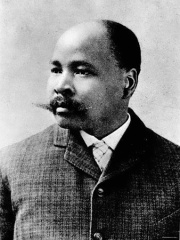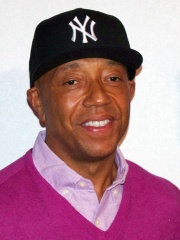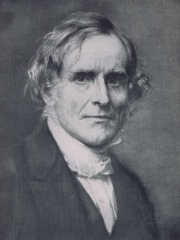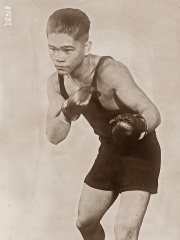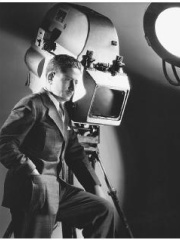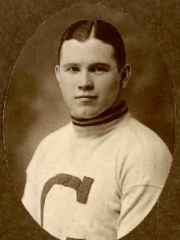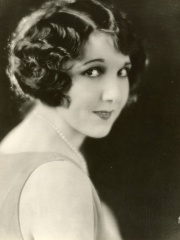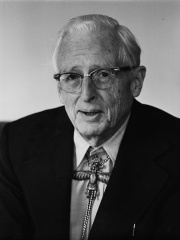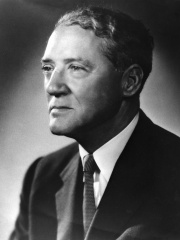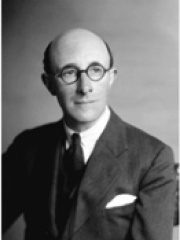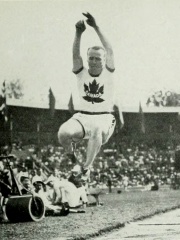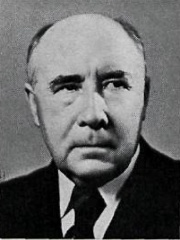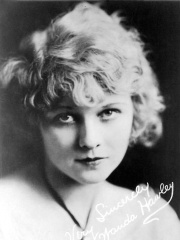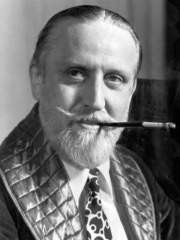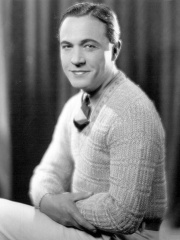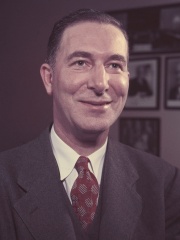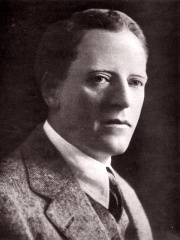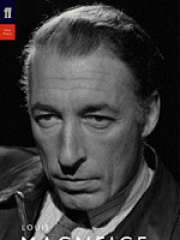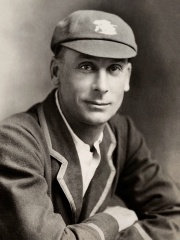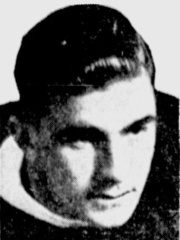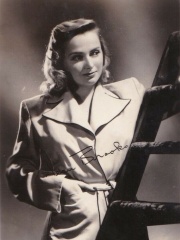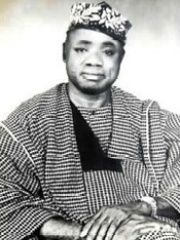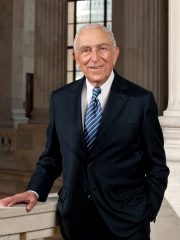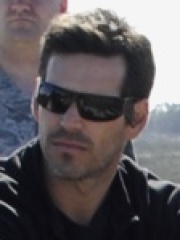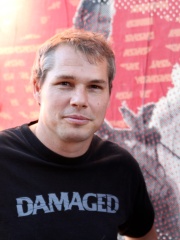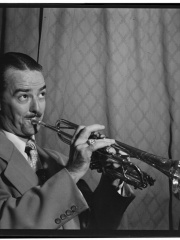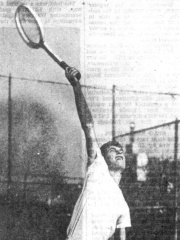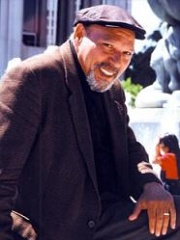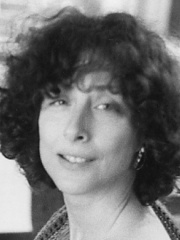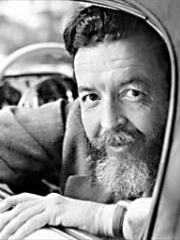WRITER
Oliver La Farge
1901 - 1963
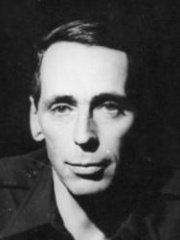
 Oliver La Farge
Oliver La Farge
Oliver Hazard Perry La Farge II (December 19, 1901 – August 2, 1963) was an American writer and anthropologist. In 1925 he explored early Olmec sites in Mexico, and later studied additional sites in Central America and the American Southwest. In addition to more than 15 scholarly works, mostly about Native Americans, he wrote several novels, including the Pulitzer Prize-winning Laughing Boy (1929). Read more on Wikipedia
Since 2007, the English Wikipedia page of Oliver La Farge has received more than 85,461 page views. His biography is available in 18 different languages on Wikipedia. Oliver La Farge is the 6,638th most popular writer (down from 5,920th in 2019), the 13,097th most popular biography from United States (down from 11,728th in 2019) and the 957th most popular American Writer.
Memorability Metrics
85k
Page Views (PV)
39.54
Historical Popularity Index (HPI)
18
Languages Editions (L)
2.83
Effective Languages (L*)
3.14
Coefficient of Variation (CV)
Notable Works
Page views of Oliver La Farges by language
Over the past year Oliver La Farge has had the most page views in the English wikipedia edition with 10,661 views, followed by German (1,167), and Spanish (719). In terms of yearly growth of page views the top 3 wikpedia editions are Basque (100.46%), Swahili (62.38%), and Latin (57.14%)
Among WRITERS
Among writers, Oliver La Farge ranks 6,638 out of 7,302. Before him are John Langalibalele Dube, Bill Lawrence, Russell Simmons, Frederick Denison Maurice, Sheila Jeffreys, and Victoria Hislop. After him are Audrey Niffenegger, Julie Plec, Élie Blanchard, Rose Tremain, Olga Slavnikova, and Bosley Crowther.
Most Popular Writers in Wikipedia
Go to all RankingsJohn Langalibalele Dube
1871 - 1946
HPI: 39.59
Rank: 6,632
Bill Lawrence
1968 - Present
HPI: 39.58
Rank: 6,633
Russell Simmons
1957 - Present
HPI: 39.57
Rank: 6,634
Frederick Denison Maurice
1805 - 1872
HPI: 39.55
Rank: 6,635
Sheila Jeffreys
1948 - Present
HPI: 39.54
Rank: 6,636
Victoria Hislop
1959 - Present
HPI: 39.54
Rank: 6,637
Oliver La Farge
1901 - 1963
HPI: 39.54
Rank: 6,638
Audrey Niffenegger
1963 - Present
HPI: 39.52
Rank: 6,639
Julie Plec
1972 - Present
HPI: 39.52
Rank: 6,640
Élie Blanchard
1881 - 1941
HPI: 39.51
Rank: 6,641
Rose Tremain
1943 - Present
HPI: 39.51
Rank: 6,642
Olga Slavnikova
1957 - Present
HPI: 39.50
Rank: 6,643
Bosley Crowther
1905 - 1981
HPI: 39.47
Rank: 6,644
Contemporaries
Among people born in 1901, Oliver La Farge ranks 355. Before him are Francisco Guilledo, Deborah Snyder, William Daniels, Dunc Munro, Carmelita Geraghty, and Miguel Brito. After him are Florence Eldridge, Donald Howard Menzel, John Sherman Cooper, Frank Fisher, E. B. Ford, and Joseph Albert Sullivan. Among people deceased in 1963, Oliver La Farge ranks 220. Before him are Calvin Bricker, Björn Þórðarson, Wanda Hawley, Monty Woolley, Jason Robards Sr., and Estes Kefauver. After him are James Kirkwood Sr., Louis MacNeice, Jack Hobbs, Hooley Smith, Jean Brooks, and Daniel O. Fagunwa.
Others Born in 1901
Go to all RankingsFrancisco Guilledo
BOXER
1901 - 1925
HPI: 40.83
Rank: 349
Deborah Snyder
PRODUCER
1901 - Present
HPI: 40.81
Rank: 350
William Daniels
FILM DIRECTOR
1901 - 1970
HPI: 40.28
Rank: 351
Dunc Munro
HOCKEY PLAYER
1901 - 1958
HPI: 40.24
Rank: 352
Carmelita Geraghty
ACTOR
1901 - 1966
HPI: 39.97
Rank: 353
Miguel Brito
SOCCER PLAYER
1901 - Present
HPI: 39.60
Rank: 354
Oliver La Farge
WRITER
1901 - 1963
HPI: 39.54
Rank: 355
Florence Eldridge
ACTOR
1901 - 1988
HPI: 39.09
Rank: 356
Donald Howard Menzel
CHEMIST
1901 - 1976
HPI: 38.87
Rank: 357
John Sherman Cooper
POLITICIAN
1901 - 1991
HPI: 38.36
Rank: 358
Frank Fisher
ATHLETE
1901 - 1984
HPI: 37.98
Rank: 359
E. B. Ford
BIOLOGIST
1901 - 1988
HPI: 37.43
Rank: 360
Joseph Albert Sullivan
POLITICIAN
1901 - 1988
HPI: 36.89
Rank: 361
Others Deceased in 1963
Go to all RankingsCalvin Bricker
ATHLETE
1884 - 1963
HPI: 41.60
Rank: 214
Björn Þórðarson
POLITICIAN
1879 - 1963
HPI: 41.54
Rank: 215
Wanda Hawley
ACTOR
1895 - 1963
HPI: 41.15
Rank: 216
Monty Woolley
ACTOR
1888 - 1963
HPI: 40.86
Rank: 217
Jason Robards Sr.
ACTOR
1892 - 1963
HPI: 40.34
Rank: 218
Estes Kefauver
POLITICIAN
1903 - 1963
HPI: 39.64
Rank: 219
Oliver La Farge
WRITER
1901 - 1963
HPI: 39.54
Rank: 220
James Kirkwood Sr.
ACTOR
1876 - 1963
HPI: 39.20
Rank: 221
Louis MacNeice
WRITER
1907 - 1963
HPI: 37.69
Rank: 222
Jack Hobbs
CRICKETER
1882 - 1963
HPI: 36.63
Rank: 223
Hooley Smith
HOCKEY PLAYER
1903 - 1963
HPI: 35.82
Rank: 224
Jean Brooks
ACTOR
1915 - 1963
HPI: 35.81
Rank: 225
Daniel O. Fagunwa
WRITER
1903 - 1963
HPI: 32.67
Rank: 226
In United States
Among people born in United States, Oliver La Farge ranks 13,097 out of 20,380. Before him are Frank Lautenberg (1924), Eddie Cibrian (1973), Harry Anderson (1952), Lee Daniels (1959), D. J. Caruso (1965), and Timmy Mayer (1938). After him are Shepard Fairey (1970), Patricia Kalember (1956), Bobby Hackett (1915), Herbert Flam (1928), Floriana Lima (1981), and Mike Beebe (1946).
Others born in United States
Go to all RankingsFrank Lautenberg
POLITICIAN
1924 - 2013
HPI: 39.55
Rank: 13,091
Eddie Cibrian
ACTOR
1973 - Present
HPI: 39.55
Rank: 13,092
Harry Anderson
ACTOR
1952 - 2018
HPI: 39.55
Rank: 13,093
Lee Daniels
FILM DIRECTOR
1959 - Present
HPI: 39.55
Rank: 13,094
D. J. Caruso
FILM DIRECTOR
1965 - Present
HPI: 39.55
Rank: 13,095
Timmy Mayer
RACING DRIVER
1938 - 1964
HPI: 39.54
Rank: 13,096
Oliver La Farge
WRITER
1901 - 1963
HPI: 39.54
Rank: 13,097
Shepard Fairey
ARTIST
1970 - Present
HPI: 39.53
Rank: 13,098
Patricia Kalember
ACTOR
1956 - Present
HPI: 39.53
Rank: 13,099
Bobby Hackett
MUSICIAN
1915 - 1976
HPI: 39.53
Rank: 13,100
Herbert Flam
TENNIS PLAYER
1928 - 1980
HPI: 39.53
Rank: 13,101
Floriana Lima
ACTOR
1981 - Present
HPI: 39.53
Rank: 13,102
Mike Beebe
POLITICIAN
1946 - Present
HPI: 39.52
Rank: 13,103
Among WRITERS In United States
Among writers born in United States, Oliver La Farge ranks 957. Before him are Neil Strauss (1969), August Wilson (1945), Jane Smiley (1949), Ellen Willis (1941), Bill Lawrence (1968), and Russell Simmons (1957). After him are Audrey Niffenegger (1963), Julie Plec (1972), Bosley Crowther (1905), Randall Jarrell (1914), James Weldon Johnson (1871), and D. B. Weiss (1971).
Neil Strauss
1969 - Present
HPI: 39.66
Rank: 951
August Wilson
1945 - 2005
HPI: 39.62
Rank: 952
Jane Smiley
1949 - Present
HPI: 39.61
Rank: 953
Ellen Willis
1941 - 2006
HPI: 39.61
Rank: 954
Bill Lawrence
1968 - Present
HPI: 39.58
Rank: 955
Russell Simmons
1957 - Present
HPI: 39.57
Rank: 956
Oliver La Farge
1901 - 1963
HPI: 39.54
Rank: 957
Audrey Niffenegger
1963 - Present
HPI: 39.52
Rank: 958
Julie Plec
1972 - Present
HPI: 39.52
Rank: 959
Bosley Crowther
1905 - 1981
HPI: 39.47
Rank: 960
Randall Jarrell
1914 - 1965
HPI: 39.45
Rank: 961
James Weldon Johnson
1871 - 1938
HPI: 39.44
Rank: 962
D. B. Weiss
1971 - Present
HPI: 39.41
Rank: 963
